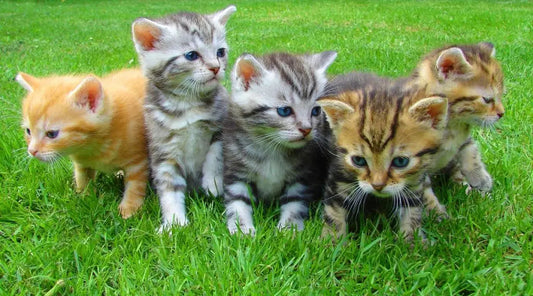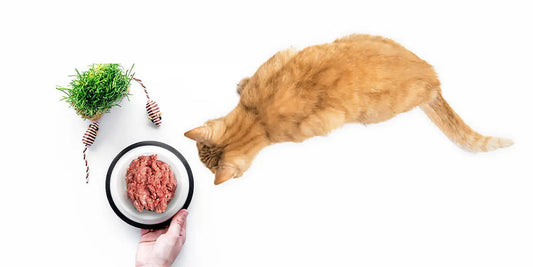
Why is My Dog Drooling So Much?
Written by Jeanne Romano
Dog drooling is perfectly normal, but excessive drooling can be a cause for concern when it comes to potential risks for your pet, such as mouth disease. By choosing to love large flappy jowl breeds such as a mastiff, a St. Bernard, and or a bully mix, which are known as excessive drooling dogs, you have elected to carry around a drool towel to clean up extra saliva. There aren't a whole lot of factors that can cause drooling, some pet breeds are simply more prone to excessive salivation, not to be confused with why your dog may be panting so much. While I would love to tell you that switching to a raw diet will solve that moist madness; it probably won’t.
However, if dog drooling excessively continues, it could indicate an issue with the salivary glands or even anxiety. If Barney’s behavior changes or if he loses appetite, this might warrant a visit to the vet to rule out any underlying disease. Some Bulldogs and other breeds naturally drool excessively, but if you’re concerned about a sudden shift, don’t hesitate to seek care.
Understanding Dog Drooling and Excessive Salivation
Drooling, also known as salivation, is a normal bodily function in dogs. Saliva helps lubricate the mouth, aid digestion, and protect teeth. While some breeds are prone to excessive drooling because of their anatomy (those large, floppy jowls!), other cases of excessive salivation might signal a problem.
Breeds Prone to Excessive Drooling
Certain breeds are famous for their drooling tendencies:
-
Mastiffs and St. Bernards: Known for their massive heads and loose lips, which can’t contain their abundant saliva.
-
Bulldogs: Their unique jaw structure contributes to their drooling reputation.
-
Boxers and Newfoundlands: These breeds also fall into the category of "drool-heavy" dogs.
For owners of these breeds, carrying a drool towel isn’t just a luxury—it’s a necessity.
What Causes Drooling in Dogs?
While some drooling is perfectly normal, excessive drooling may have a cause that requires attention. Here are some possible culprits:
-
Mouth Disease or Dental Issues
Problems such as gum disease, broken teeth, or oral infections can cause excessive drooling. If your dog shows signs like red or swollen gums, difficulty eating, or bad breath, a vet visit is essential. -
Salivary Gland Disorders
Issues with the salivary glands, such as blockages, infections, or swelling, can result in drooling excessively. These problems may also cause visible swelling near the jaw or neck. -
Foreign Objects in the Mouth
Sticks, bones, or even toys lodged in your dog’s mouth can trigger drooling as their body attempts to dislodge the object. -
Stress or Anxiety
Just like humans, dogs can exhibit physical symptoms of anxiety, including excessive salivation. Look for other signs of stress, such as pacing, whining, or restlessness. -
Nausea or Motion Sickness
Whether due to travel or an upset stomach, nausea is a common cause of excessive drooling in dogs.
When Should You Worry About Excessive Drooling?
It’s important to recognize when excessive drooling is more than just a quirky breed trait. Keep an eye out for the following warning signs:
- Behavior Changes: Lethargy, irritability, or unusual behavior.
- Loss of Appetite: If your dog isn’t eating, it could signal a larger issue.
- Physical Symptoms: Blood in the saliva, discoloration, or a foul odor coming from the mouth.
- Swelling or Pain: Noticeable discomfort around the jaw or neck area.
If you observe these symptoms, it’s time to consult your vet to rule out diseases or other serious health concerns.
Managing a Drooling Dog
For excessive drooling dogs, management is often about minimizing the mess and keeping them comfortable:
- Daily Hygiene: Regularly clean your dog’s mouth and monitor their teeth and gums.
- Hydration: Ensure they have access to fresh, clean water to keep their mouths healthy.
- Accessories: Consider using bibs or drool towels to manage saliva, especially with breeds like Bulldogs or Mastiffs.
- Routine Vet Visits: Stay proactive with dental checkups and health screenings.
Drooling vs. Panting: Know the Difference
While both drooling and panting involve the mouth, they serve different purposes. Panting helps regulate a dog’s body temperature, whereas drooling stems from salivary gland activity. If your dog’s panting seems excessive or accompanies unusual drooling, it could point to a health issue.
Supporting Your Dog with Darwin’s Natural Pet Products
At Darwin’s, we believe in supporting your dog’s health journey with the highest quality raw dog food. Our Natural Selections line offers fresh dog food crafted with human-quality ingredients, including free-range meats and organic vegetables, to provide complete and balanced nutrition for your pet. Free from fillers, preservatives, and artificial hormones, our meals are designed to support your dog’s overall well-being, just as nature intended. With Darwin’s, you’re choosing raw pet food that’s crafted with care and expertise, delivering the nutrition your pets deserve.


